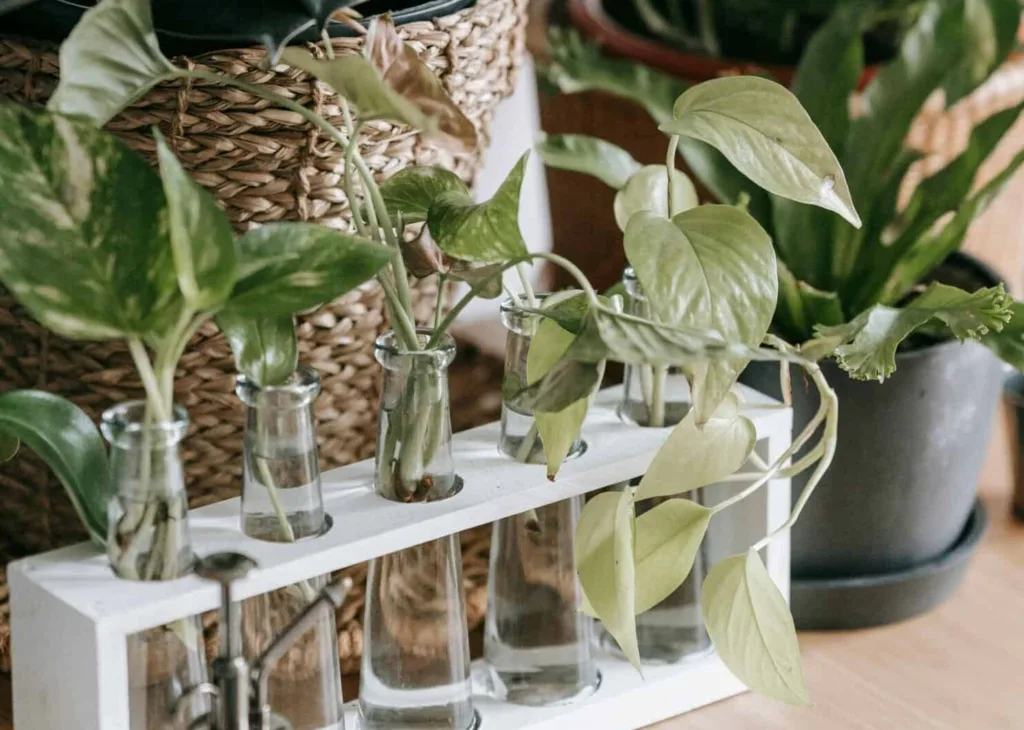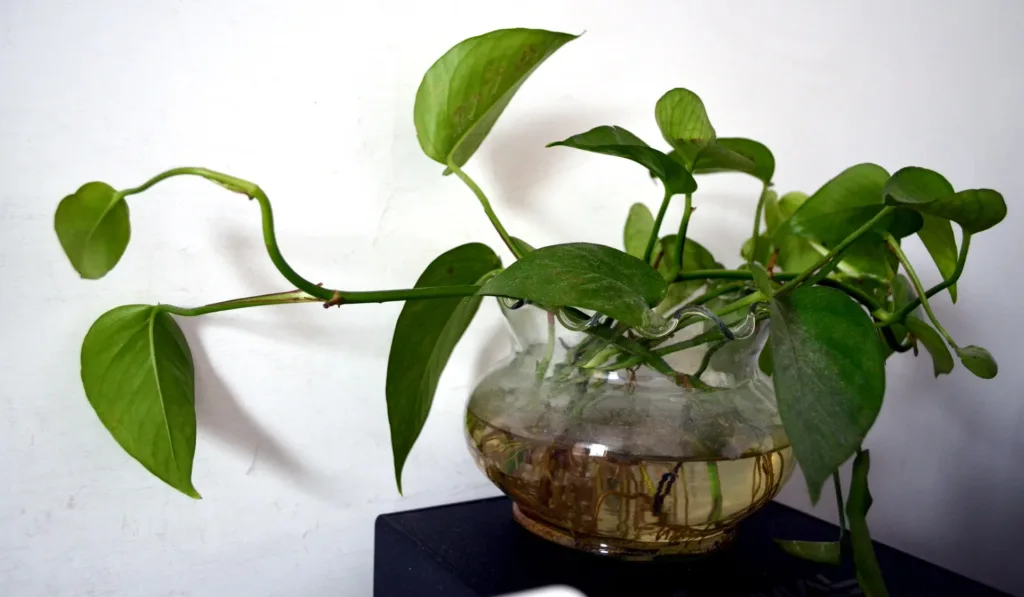Snake plants (Sansevieria spp.), also known as George’s sword, viper’s bowstring hemp and mother-in-law’s tongue. They are known for their hardiness, ease of care, and striking, upright leaves. Many plant owners propagate this indoor plants through leaf cuttings or division, but growing snake plant from seed is a rewarding and exciting challenge. Seed propagation is ideal for those who are patient and enjoy experimenting with new growing techniques. However, it’s not the fastest route to a mature plant.
Growing snake plants from seeds allows you to create unique varieties, especially if you’re cultivating seeds from your own flowering snake plants. In this comprehensive guide on growing snake plant from seed, we’ll take you step-by-step through the entire process—from acquiring seeds to caring for your seedlings. Whether you’re a seasoned gardener or just beginning, this guide will help you successfully grow snake plants from seeds and troubleshoot any issues you might encounter along the way.
Table of Contents
Understanding how to grow snake plant from seed can open new possibilities for your gardening experience.
Can You Grow Snake Plants from Seeds?
Yes, you can grow snake plants from seeds, though it’s not the most common method of propagation. Growing them from seeds takes longer compared to other methods like cuttings or division. Snake plants can take up to a year or more to mature when grown from seeds, making them less favorable for those who want quick results. However, for those interested in growing their plants from the very start, seed propagation is a fascinating option.

The main challenge with seed propagation is the relatively low germination rate compared to other methods, especially since snake plants rarely flower indoors. When seeds do appear, they need to be fresh for the best chance of successful germination. Growing snake plants from seeds allows you to grow rare varieties that might not be found easily as cuttings. While the process requires patience and persistence, it’s a highly rewarding method for gardeners looking to diversify their collection.
How to Get Snake Plant Seeds
Getting snake plant seeds can be a bit tricky, as they’re not commonly found in nurseries or local stores.

Here are some of the best options for obtaining seeds:
- Online Seed Suppliers: Websites like Etsy, Amazon, or specialized plant shops may offer snake plant seeds. Be sure to buy from trusted sellers with good reviews.
- Harvesting Your Own Seeds: If your snake plant flowers and produces berries, you can harvest the seeds. To do this, allow the berries to ripen fully (they turn red or orange when ready). Once ripe, open the berry to extract the seeds, then rinse them thoroughly to remove any pulp.
- Local Nurseries and Garden Centers: While rare, some local plant shops may sell seeds, especially during the spring growing season.
After harvesting or buying the seeds, it’s crucial to store them properly to maintain their viability. Keep them in a cool, dry place in a paper envelope, and make sure they’re not exposed to sunlight.
Ideal Growing Conditions for Snake Plant Seeds
Snake plant seeds thrive in specific conditions that promote germination and healthy growth. Here’s a breakdown of the optimal environment for growing snake plants from seeds:
- Temperature: Snake plant seeds need warmth to germinate successfully. The ideal temperature range is between 70-85°F (21-29°C). If the temperature drops below 65°F (18°C), germination can be significantly delayed.
- Light: Provide bright, indirect light or use a grow light. Avoid direct sunlight, as it can scorch the delicate seedlings. A north or east-facing window works well.
- Humidity: A humidity level between 50-70% is ideal for seed germination. You can maintain humidity by covering the seed tray with a clear plastic dome or wrap.
- Soil: A well-draining, light, and airy soil mix is essential for successful germination. Consider using a cactus mix, which has good drainage properties. You can also add perlite or sand to the mix for additional drainage. Avoid heavy, moisture-retaining soil that may promote root rot.
- Watering: It’s crucial not to overwater the seeds. Keep the soil slightly moist but never soggy. Light misting with a spray bottle works best for maintaining moisture.
By providing these conditions, you’ll create an environment that encourages successful seed germination and healthy plant growth.
Preparing for Seed Germination
Before sowing your snake plant seeds, you need to prepare everything for successful germination.

Here are some important steps:
1. Choosing the Right Soil
Start by using a well-draining soil mix. You can buy a cactus mix or make your own by combining 50% cactus or succulent soil, 30% perlite, and 20% coco coir. This ensures the right balance of moisture retention and drainage.
2. Selecting Containers
Use a shallow seed tray or small pots with drainage holes. A shallow tray allows you to plant multiple seeds and gives them room to spread out. Ensure that the container is clean to avoid introducing any pathogens.
3. Soaking the Seeds (Optional)
To speed up germination, soak the seeds in warm water for 24 hours before sowing. This can soften the seed coat and encourage quicker sprouting. Be sure to dry them thoroughly before planting.
Step-by-Step Guide to – How to Grow Snake Plant from Seeds
Now that you’ve prepared the seeds and soil, it’s time to get started with the actual planting process. Here’s a detailed step-by-step guide:
Guide to Growing Snake Plants from Seeds
It will take around 3 to 8 weeks
1.Sow the Seeds

To grow snake plant from seeds firstly , fill your container with the prepared soil mix, leaving about half an inch from the top to avoid soil spillage. Lightly press the soil down to remove any air pockets. Sprinkle the seeds evenly on the surface of the soil. Avoid overcrowding the seeds. Gently press them down with your finger or a flat surface, ensuring they make contact with the soil. Afterward, cover them with a thin layer of soil (about ⅛ inch deep).
2.Water and Maintain Moisture

After sowing, lightly water the soil to moisten it without soaking it. Use a spray bottle to avoid disturbing the seeds. Once the soil is moist, cover the container with a clear plastic lid or wrap the tray with plastic wrap. This will help retain moisture and increase humidity, which is essential for seed germination. Mist the surface lightly every few days to maintain moisture.
3.Provide the Right Light
Place your seed tray in a warm location, ideally near a window with indirect light or under a grow light. Keep the temperature between 70-85°F (21-29°C). Avoid direct sunlight, which can overheat the seeds and dry them out.
4.Germination and Waiti patiently

Snake plant seeds typically take 3-8 weeks to germinate. During this time, maintain high humidity and ensure that the soil stays moist but not soggy. Be patient, as germination can be slow, and not all seeds may sprout. If the seeds don’t germinate after 8 weeks, you can try a second round or plant fresh seeds.
How to Care for Young snake plant Seedlings
Once the seedlings emerge, it’s crucial to provide them with the right care to ensure they grow into healthy plants. Here are some important tips for nurturing young snake plant seedlings:
1. Light Conditions
After germination, place the seedlings in a bright spot with indirect light. Seedlings are delicate and can be damaged by too much direct sunlight. A windowsill with filtered sunlight or a grow light is ideal for promoting healthy growth.
2. Watering

Water the seedlings lightly, keeping the soil slightly moist. Avoid soaking the soil, as excess moisture can lead to root rot. Use a fine mist spray bottle to ensure gentle watering. Always allow the top layer of soil to dry out before watering again.
3. Transplanting
When the seedlings have grown to about 2-3 inches tall, it’s time to transplant them into separate pots. Use a similar well-draining soil mix and choose pots that are just a bit larger than the seedlings. Be careful not to disturb the roots during the transplant process.
4. Fertilizing
Young snake plants don’t require heavy feeding. You can start using a diluted, balanced liquid fertilizer every 4-6 weeks once the seedlings are well-established and have a few leaves. Avoid overfertilizing, as this can cause damage to young plants.
Common problems of snake plant
Here are some common problems you may encounter during the germination of snake plant from seeds and seedling stages, along with their solutions:
| Problem | Cause | Solution |
|---|---|---|
| No germination | Poor quality seeds or incorrect conditions | Use fresh seeds, maintain warmth, and check for optimal moisture. |
| Mold growth | Excess moisture or poor airflow | Improve air circulation, reduce watering, and ensure good drainage. |
| Slow growth | Low temperature or low light | Increase warmth and provide indirect light. |
| Damping-off disease | Overwatering and poor drainage | Use sterile soil, avoid overwatering, and improve ventilation. |
| Yellowing leaves | Overwatering or too much fertilizer | Reduce watering and use diluted fertilizer. |
By recognizing these issues early on and addressing them, you’ll improve your chances of successfully growing healthy snake plants from seeds.
Seed vs Division vs Leaf propagation
When it comes to propagating snake plants (Sansevieria spp.), gardeners have several options, each with its own set of benefits and challenges. Seed propagation, leaf cuttings, and division are the most common methods, but they differ significantly in terms of time, difficulty, and success rates.
Seed Propagation
Seed propagation of snake plant is the most time-consuming method of growing snake plants. While it offers the exciting potential of growing unique varieties, it requires significant patience. First, you need to acquire fresh seeds, either by purchasing them or harvesting them from your own snake plants (if they bloom and produce berries).
The germination process can take anywhere from 3 to 8 weeks, and in ideal conditions, it may still take up to a year for the seeds to grow into fully mature plants. One of the challenges with seed propagation is the low germination rate, meaning not all seeds may sprout, and those that do might take a long time to establish roots. Additionally, maintaining the right temperature, humidity, and light conditions is crucial to success. For those who enjoy the challenge and the potential for rare or new varieties, seed propagation is a rewarding process, though it’s not the fastest option.
Leaf Cuttings
Leaf cuttings are a popular and quicker method for propagating snake plants. To propagate via leaf cuttings, gardeners snip a healthy leaf from the parent plant, typically using a sterilized sharp knife or scissors. The cutting is then allowed to dry and callous over for a few days, which helps prevent rotting when planted. Afterward, the cutting is placed in a pot with a well-draining soil mix, where it will begin to root.

The process is generally faster than seed propagation, and many gardeners find it easier and more reliable. Rooting can take several weeks to a few months, depending on the conditions and the size of the cutting. A key advantage of leaf cutting propagation is that it produces genetically identical plants to the parent, meaning the new plant will look and grow just like the original one. However, the downside is that you are limited to the same varieties available in your existing plants, so this method doesn’t allow for the creation of new hybrids or unique forms.
Division Propagation
Division propagation is often the fastest and easiest method for multiplying snake plants. It involves splitting an older, mature snake plant into smaller sections, each with its own root system. To divide a snake plant, you would carefully remove the plant from its pot, separate the clumps of leaves and roots, and replant the divisions in individual pots with well-draining soil.
This method results in an instant, fully rooted plant, and it is the quickest route to having new plants. Mature plants can be divided into multiple sections, and each section can grow independently after transplanting. The primary benefit of division is that it is almost always successful, especially with healthy plants. However, a drawback is that it requires a mature snake plant to begin with, and it may take some time for the plant to reach a size large enough to divide.
Comparison
In summary, while seed propagation offers the possibility of growing unique varieties and new hybrids, it’s the slowest and most unpredictable method. It requires patience and perfect growing conditions to achieve success. Leaf cutting propagation offers a faster and more reliable method, allowing gardeners to clone their existing plants with ease, although the variety is limited to the parent plant. Lastly, division propagation is the quickest and most foolproof method, but it requires a mature plant and doesn’t allow for the creation of new varieties. For gardeners looking for speed and simplicity, division is ideal. However, for those who enjoy the process of nurturing new plants and potentially creating something unique, seed propagation and leaf cutting offer their own rewards.
FAQs
How long does it take for snake plant seeds to germinate?
Snake plant seeds generally take between 3 to 8 weeks to germinate. However, the exact time can vary based on factors such as temperature, humidity, and seed quality. Providing a consistently warm environment (around 70–85°F) and proper moisture levels can help speed up the process
Can I grow snake plants from seeds indoors, or do they need an outdoor environment?
Snake plants can be successfully grown indoors as long as you provide the right conditions. Indoor propagation requires a warm, well-lit area with indirect sunlight or a grow light, along with a well-draining soil mix. Although natural outdoor conditions may be ideal for some plants, snake plants’ adaptability makes indoor growing feasible.
How should I water snake plant seeds and young seedlings?
When growing snake plant seeds, it’s crucial to keep the soil consistently moist (but not soggy) to promote germination. Use a fine mist spray bottle to avoid disturbing the seeds. For young seedlings, water lightly and allow the top layer of soil to dry out between waterings to prevent root rot and fungal issues.
What are the ideal soil conditions for germinating snake plant from seeds?
Snake plant seeds thrive in a well-draining soil mix. A good recipe is to combine a cactus or succulent mix with added perlite or sand. This type of soil prevents excess moisture retention while still providing enough nutrients and structure for the seeds to develop healthy roots.
Is growing snake plant from seeds better than leaf cuttings or division for snake plants?
Each propagation method has its pros and cons. Growing snake plants from seeds offers the chance to develop new varieties and genetic diversity but is slower and less predictable. Leaf cuttings produce genetically identical plants relatively quickly, while division is the fastest method if you have a mature plant. The best method depends on your goals, patience level, and the resources available.
Conclusion & Final Tips
Growing snake plants from seeds is a slow but rewarding process that requires patience and care. While it may take longer than other propagation methods, you’ll have the satisfaction of growing your plants from scratch, with the possibility of creating unique varieties. By following the steps outlined in this guide—providing the right growing conditions, preparing the soil properly, and nurturing your seedlings—you can achieve success in growing healthy, beautiful snake plants from seeds.
Remember, patience is key, and if you face challenges along the way, troubleshooting common problems will help you stay on track. Happy gardening, and may your snake plants thrive!










